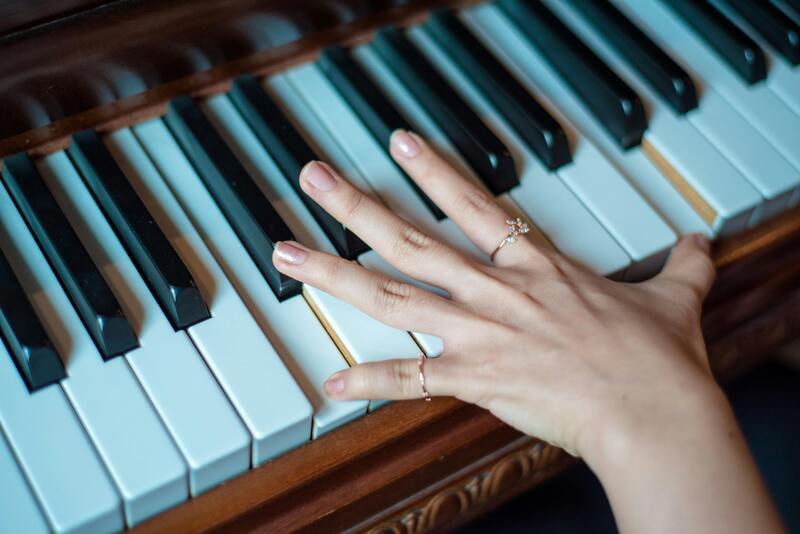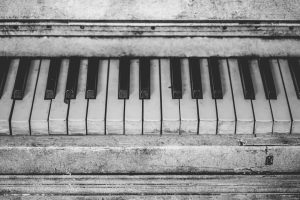The term “canon in music” brings to mind the timeless beauty of Baroque-era compositions, where melodies interlock and overlap in a delicate balance. But many musicians might wonder what is a canon in music, exactly? The canon is an old musical form, which developed out of the practice of counterpoint, and has captivated listeners and composers for centuries.
The definition of canon in music points to a structured composition where a melody is layered and imitated in successive iterations. One melody enters a few beats or measures after another, creating a mesmerizing musical puzzle. From its medieval origins to developments in modern compositions, the canon form has a strong appeal to composers across musical eras and styles.
This article delves into the world of canons, exploring their mechanics, history, and significance in the tapestry of musical tradition, offering insights for both the curious listener and the aspiring composer.

What is counterpoint?
Counterpoint refers to a technique and musical composition with two or more melodic voices moving simultaneously, creating a sense of harmony while retaining their own identity. In the context of a canon, counterpoint elevates the simple act of imitation into a rich tapestry of interlocking melodies, each voice distinct yet harmoniously intertwined with the others.
Counterpoint in canon music is a way to showcase the power of a single melodic line and its developments. The interplay between the voices in a canon involves not just a straightforward repetition of the melody but a nuanced dialogue. This dialogue is characterized by moments of convergence and divergence, tension and resolution, as the different voices interact. The result is a musical conversation that unfolds over time, revealing layers of complexity and emotion.
Moreover, counterpoint allows for a variety of textures and moods within a single piece of music. Through techniques such as inversion, where the melody is flipped upside down, or augmentation and diminution, where the melody is stretched or compressed in time, the composer can explore different facets of the original theme. This exploration creates a dynamic and evolving piece that maintains coherence and unity, thanks to the underlying counterpoint principles.
The mastery of counterpoint in canon music is not merely a technical achievement but a deeply expressive one. It reflects the composer’s ability to create a multi-dimensional musical experience from a single melodic idea, engaging the listener’s intellect and emotion. The canon, with its foundation in counterpoint, becomes a medium for exploring the infinite possibilities contained within a simple melody, testament to the enduring power and beauty of this musical form.
Other types of canon music
Canon music is a captivating form of composition where a single melody is played or sung in a staggered manner by different voices or instruments. This technique creates a fascinating interplay of melodies that harmonize with each other, even as each line maintains its own distinct path. But beyond the traditional rounds that many of us are familiar with, there are other types of canon music that showcase the versatility and depth of this compositional method.
One intriguing variation is the infinite canon, where the music is designed to loop endlessly without a clear beginning or end. This creates a perpetual musical experience, allowing listeners to immerse themselves in the seamless flow of harmonies. Another type is the mirror canon, where one voice plays the melody forwards, while the other voice plays the melody upside down or in the opposite direction. This results in a mesmerizing effect as the melodies intersect and diverge in unexpected ways.
There’s also the crab canon, a form of mirror canon. One part plays the melody in the forward direction, and the other part plays the melody in the reverse direction, similar to the “mirror canon,” but when each part plays to the end, it moves from the ending point to the starting point. The format is such that even if you go back and play, you’ll still get a harmonious sound. The puzzle canon adds an element of intellectual challenge, requiring performers to decipher how the parts fit together before the harmonious whole is revealed.
These variations on canon music demonstrate the creative possibilities within this form, each bringing its own unique flavor and complexity to the basic principle of staggered, imitative melody. Whether through the endless loop of an infinite canon, the reflective symmetry of a mirror canon, or the intricate puzzle of fitting multiple parts together, canon music continues to fascinate composers and listeners alike with its blend of simplicity and sophistication.
How a canon works
A canon in music is a way of composing where one single melody is played or sung by different voices, but starts at different times. Imagine a song that one person starts singing, and after a few notes, another person starts singing the same song from the beginning. As more voices join in at different times with the same melody, it creates a layered musical effect.
This technique makes the music sound rich and intricate, even though it’s all based on the same tune. The beauty of a canon lies in its simplicity and the complex harmony it creates as the same melody overlaps itself. It’s like a musical round, where the tune chases itself, creating echoes and patterns.
Difference between a canon and a fugue
While a canon and a fugue might seem similar because they both involve the interweaving of multiple melodies, there are key differences. A canon in music sticks to one main rule: the melody is strictly followed by each voice or instrument entering at different times. There’s a kind of musical follow-the-leader happening where every part is an exact echo of the first melody.
On the other hand, a fugue is more like a sophisticated conversation among melodies. What is a fugue? It starts with a single melody, called the subject, but as more voices join in, they don’t just repeat the melody. Instead, they play with it, changing it up, responding to it, and even turning it upside down in a process called inversion. Fugues have a lot more freedom than canons. They’re about variation and complexity, turning that initial melody into a rich, multi-layered piece of music that’s always evolving.
So, while both canons and fugues create beautiful, interlocking melodies, a canon music definition highlights its repetitive and echoing nature, whereas a fugue celebrates the creative interplay and transformation of its themes.
Canons in the baroque period
The Baroque period, spanning from approximately 1600 to 1750, witnessed a remarkable evolution in music, with the canon being one of its most intricate and admired forms. A canon is a contrapuntal (counterpoint-based) compositional technique that employs a melody with one or more imitations of the melody played after a given duration. The result is a richly layered and harmonious texture, showcasing the complexity and emotional depth characteristic of Baroque music.
During this era, composers like Johann Sebastian Bach masterfully utilized canons to create works of profound beauty and technical sophistication, demonstrating not only their skill in composition but also their understanding of musical structure and harmony. The use of canons in the Baroque period exemplifies the era’s broader artistic and cultural themes, including an emphasis on ornate detail, emotional expression, and the blending of various voices and instruments to achieve a grand, unified sound.
Evolution of the canon: from medieval to modern times
Medieval beginnings: the roots of canon music
The canon’s journey begins in the medieval period, where it emerged as a method of musical experimentation within the church. These early canons were often written in religious manuscripts, showcasing the period’s fascination with mathematical precision and the beauty of overlapping melodies.
Canons in the baroque period
In the Baroque era, the canon found new life, epitomized by the works of composers like Johann Sebastian Bach. His mastery of the form, particularly in “The Art of Fugue,” illustrates the canon’s capacity for complexity and emotional depth, setting a high bar for future generations.
Canon techniques in the classical and romantic periods
Moving into the Classical and Romantic periods, the canon continued to evolve, blending with emerging musical styles. While perhaps less overtly prevalent, its influence persisted in the work of composers like Mozart and Beethoven, who integrated canonical techniques into larger compositions for added texture and thematic development.
Innovation and continuity: canons in modern music
In modern music, the canon has embraced a wide array of genres, from classical compositions to popular music arrangements. Contemporary composers have experimented with its form, using technology and innovative techniques to expand its expressive potential, proving the canon’s enduring relevance and adaptability.
Composing a canon: a guide for musicians
Composing a canon presents a unique challenge, blending creativity with the strictures of this form. Here are key steps and tips for musicians eager to explore canon in music:
- Start simple: Begin with a clear, memorable melody. Simplicity is your ally, allowing for more complex interplay as you add voices.
- Plan your entries: Decide on the interval between voice entries. Common choices are one or two measures apart, but feel free to experiment.
- Consider harmony: As each voice enters, ensure the overlapping melodies harmonize. This often requires adjusting piano intervals or rhythms to maintain musical coherence.
- Experiment with variations: Try different forms, such as rounds or mirror canons, to see how each affects the overall texture and mood of your piece.
- Practice patience: Canon composition requires careful planning and revision. Be prepared to tweak your melody and harmonies to achieve the desired effect.
The YouTube video “Introduction to writing two-part canon” by Gareth Green is a tutorial on composing a two-part canon, emphasizing counterpoint and harmonic coherence. Green guides viewers through composing a canon by starting with a simple melody and incrementally adding complexity. He stresses the importance of ensuring that the melody harmonizes across both parts and demonstrates the composition process. The tutorial concludes with the performance of the composed canon, serving as both an educational guide and an encouragement for viewers to practice canon writing to better understand musical composition principles.
The canon’s enduring legacy in music
As we can see, the canon technique remains a fundamental and vital compositional technique that all pianists should familiarize themselves with.
Exploring the definition of canon and its history gives us insights into the complexities of musical arrangement and shows us how harmony, melody, and rhythm converge to create timeless music. This form not only tests the composer’s skill but also enriches the listener’s experience, illustrating the transformative power of a well-crafted theme.
The ability of the canon form to seamlessly combine repetition and variation is fantastic. For those who create and those who listen, the canon provides a profound connection to the vast landscape of musical expression, underscoring the depth and diversity of the art form itself.
Author of this blog post:
Susana Pérez Posada

With over seven years in piano education and a deep passion for music therapy, Susana brings a unique blend of expertise to Skoove. A graduate in Music Therapy from SRH Hochschule Heidelberg and an experienced classical pianist from Universidad EAFIT, she infuses her teaching with a holistic approach that transcends traditional piano lessons. In her writings for Skoove, Susana combines her rich musical knowledge with engaging storytelling, enriching the learning experience for pianists of all levels. Away from the piano, she loves exploring new places and immersing herself in a good book, believing these diverse experiences enhance her creative teaching style.
Published by Lidya Hovan from the Skoove team















